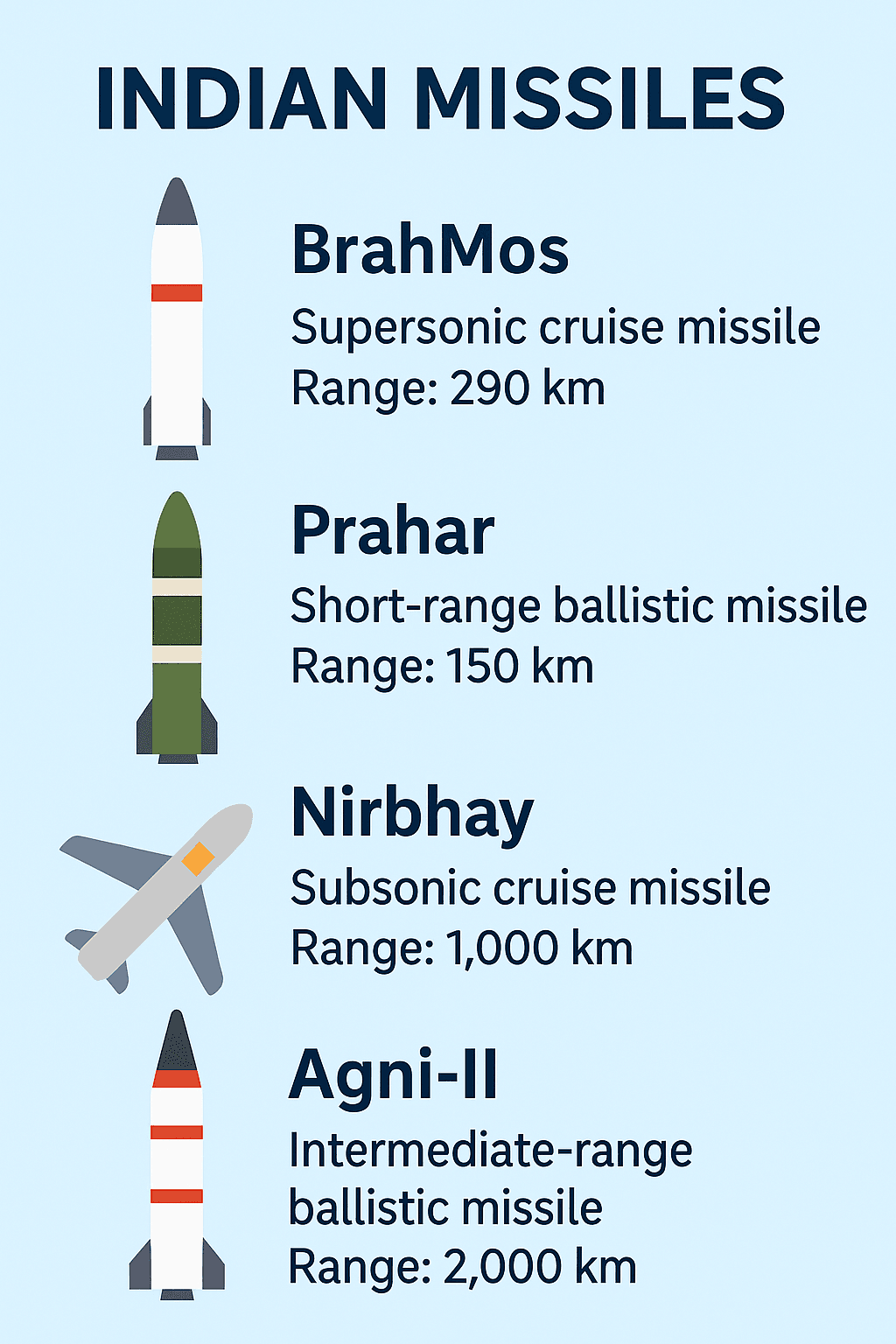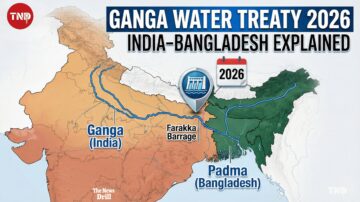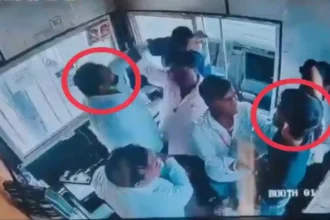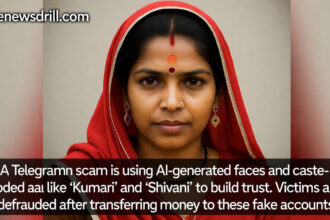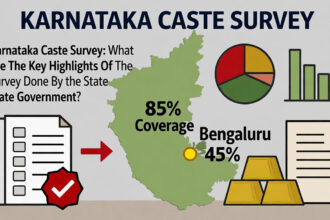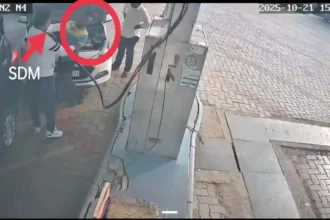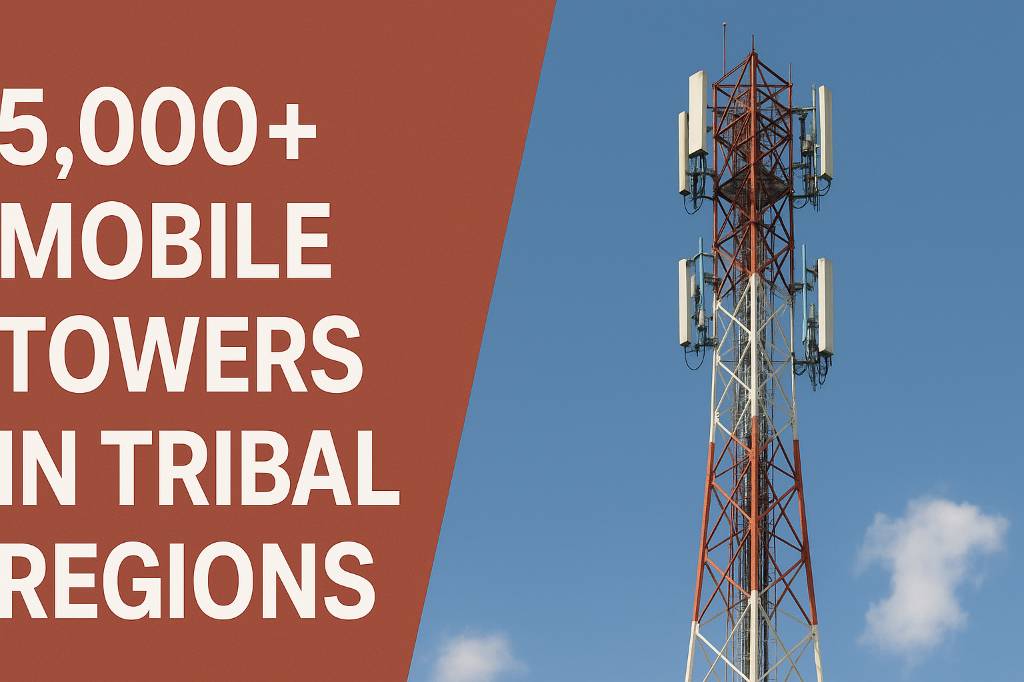
Raipur, July 2025 – In a decisive step towards bridging the digital divide and empowering underserved tribal communities, the Chhattisgarh government has announced plans to install over 5,000 mobile towers across the state, with special focus on the Surguja and Bastar divisions. These regions, known for their dense forests and tribal population, have long suffered from inadequate telecommunications infrastructure.
- Bridging the Digital Divide in Remote Tribal Regions
- A Multi-Dimensional Push for Digital Chhattisgarh
- 1. State Data Centre (SDC) to be Upgraded to Tier-III Standards
- 2. Expansion of e-District 2.0 Services
- 3. Integration of Monitoring Systems
- BharatNet Phase 2 and SWAN Network Acceleration
- Left-Wing Extremism and Strategic Importance of Connectivity
- Expected Benefits of the Mobile Tower Rollout
- Political and Public Reactions
- Monitoring and Accountability Mechanisms
- Chhattisgarh’s Vision 2047: A Digital Future
- Conclusion
The directions were issued during a high level review meeting of the state’s Electronics and Information Technology Department, chaired by Chief Minister Vishnu Deo Sai at the Mantralaya (Mahanadi Bhawan) in Raipur. The move comes under the broader vision of “Viksit Chhattisgarh 2047”, aligned with the Centre’s “Viksit Bharat 2047” initiative, aiming to transform India into a fully developed nation by its 100th year of independence.
Bridging the Digital Divide in Remote Tribal Regions
The Surguja and Bastar regions, despite being culturally rich and resource abundant, have historically been left behind in terms of infrastructure and digital access. The lack of mobile connectivity has not only isolated tribal communities socially but has also limited their access to education, healthcare, employment, and government services.
The state’s plan to roll out over 5,000 mobile towers in a phased manner aims to change that. The initiative is seen as a transformative measure that will improve not only digital access but also governance, transparency, and developmental outreach in these regions.
“Digital infrastructure is no longer a luxury it is a basic necessity for inclusive development. With this tower rollout, we are opening new doors of opportunity for lakhs of tribal citizens,” Chief Minister Sai said during the review meeting.
A Multi-Dimensional Push for Digital Chhattisgarh
The review meeting covered a range of projects and technological upgrades. According to a press release by the Chhattisgarh Public Relations Department, CM Sai emphasized the importance of fiber optic connectivity, data centre modernization, and digital governance tools to support the mobile tower initiative.
Key highlights of the meeting included:
1. State Data Centre (SDC) to be Upgraded to Tier-III Standards
The Chief Minister instructed officials to expedite the upgradation of the State Data Centre (SDC) to Tier-III standards, which would provide better redundancy, security, and uptime for government data services. The tendering process for this upgrade has already been completed.
2. Expansion of e-District 2.0 Services
The state is also expanding its e-District 2.0 platform, increasing the number of online public services from 85 to over 250. The government aims to move most offline services to digital platforms to improve efficiency and reduce corruption.
3. Integration of Monitoring Systems
The Chief Minister directed departments to integrate dashboards, including:
- The Atal Monitoring Portal
- The Left Wing Extremism (LWE) Dashboard
- BharatNet Phase-2 monitoring
These tools will enhance data transparency, inter departmental collaboration, and real time decision making.
BharatNet Phase 2 and SWAN Network Acceleration
One of the backbone projects linked to the tower installation is BharatNet Phase 2, a national mission to provide broadband connectivity to all Gram Panchayats in India. Chhattisgarh has been given specific targets to accelerate the deployment of fiber-optic infrastructure to support tower backhaul and internet delivery.
In addition to BharatNet, the Chhattisgarh State Wide Area Network (CG SWAN) is also being strengthened to provide robust communication infrastructure among government offices at the state, district, and block levels.
Principal Secretary of Electronics & Information Technology, Niharika Barik, presented a detailed roadmap and status report during the review session. She stated that the department is working closely with the Centre’s DoT (Department of Telecommunications) and BSNL for implementation support.
Left-Wing Extremism and Strategic Importance of Connectivity
The Bastar region, in particular, is one of India’s most affected zones by Left-Wing Extremism (LWE). Lack of infrastructure, especially digital and telecom, has played into the hands of extremists who exploit the alienation of the local population.
Improving digital infrastructure is now being seen as a security strategy as much as a developmental one.
“Connectivity is a deterrent to extremism. Once people have access to jobs, information, healthcare, and education, they become stakeholders in peace,” said an official from the state’s Home Department.
The Ministry of Home Affairs at the Centre has also been advocating for mobile and internet connectivity in LWE affected areas, often providing special funds for such projects. Chhattisgarh’s plan is expected to attract both state and central financial support under this security development model.
Expected Benefits of the Mobile Tower Rollout
The mobile tower installation project is expected to deliver multi sectoral benefits, including:
Healthcare
- Telemedicine services in remote PHCs and CHCs
- Health alerts and mobile diagnostics
- Online medical consultations for tribal populations
Education
- Virtual classrooms and online learning for tribal students
- Access to online coaching and exam prep for youth
- Training for local teachers in digital tools
Employment and Entrepreneurship
- Online job portals and MGNREGA registrations
- e-SHRAM enrollment for unorganized workers
- Tribal artisans can sell products online via GeM or e-commerce
Governance
- Real-time grievance redressal
- Direct Benefit Transfers (DBT) and mobile-based Aadhaar services
- Citizen feedback through mobile platforms
Political and Public Reactions
The announcement has been welcomed by social activists and local tribal leaders, who have long campaigned for better connectivity in the region. However, the opposition parties have cautioned against “hollow promises” and demanded concrete timelines and transparency in tendering.
Congress leader Charan Das Mahant questioned the feasibility of completing the tower rollout before 2027, citing the poor track record of similar past initiatives.
“The intention is good, but implementation is key. The people of Bastar and Surguja have waited for decades. We hope this is not another election time gimmick,” Mahant said in a press conference.
Monitoring and Accountability Mechanisms
To avoid bureaucratic delays and ensure timely implementation, the Chief Minister has asked the IT Department to prepare bi-monthly implementation reports and progress dashboards. These will be submitted to his office directly and will be accessible to the public via a transparency portal.
In addition, a Project Monitoring Group (PMG) comprising officials from BSNL, BharatNet, CG SWAN, the State Planning Commission, and tribal welfare experts will oversee the technical execution.
Chhattisgarh’s Vision 2047: A Digital Future
Chhattisgarh’s mobile tower plan is not an isolated project it is part of a broader digital development roadmap that includes:
- Smart Village Pilots in tribal districts
- Digital Literacy Drives for rural women and youth
- Public Wi-Fi at government schools and hospitals
- e-Governance kiosks in every panchayat by 2030
The state envisions itself as a leader in inclusive digital transformation, particularly in regions traditionally left behind in India’s growth story.
Conclusion
The planned rollout of over 5,000 mobile towers in Chhattisgarh’s tribal regions signals a bold push toward digital empowerment, governance reform, and social inclusion. By improving mobile connectivity in districts like Bastar and Surguja, the government aims to bring remote citizens closer to the mainstream, reduce the influence of extremism, and unlock untapped economic and human potential.
If implemented effectively, this project could serve as a national model for using digital infrastructure to drive inclusive growth.
Stay Connected with The News Drill for more updates.
Submit a news tip or story: editor@thenewsdrill.com
Contact us: contact@thenewsdrill.com
Follow The News Drill on X (Twitter) for real-time updates on policy, technology, and rural development initiatives.





